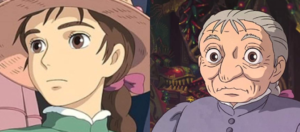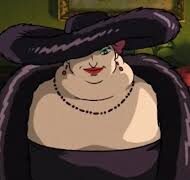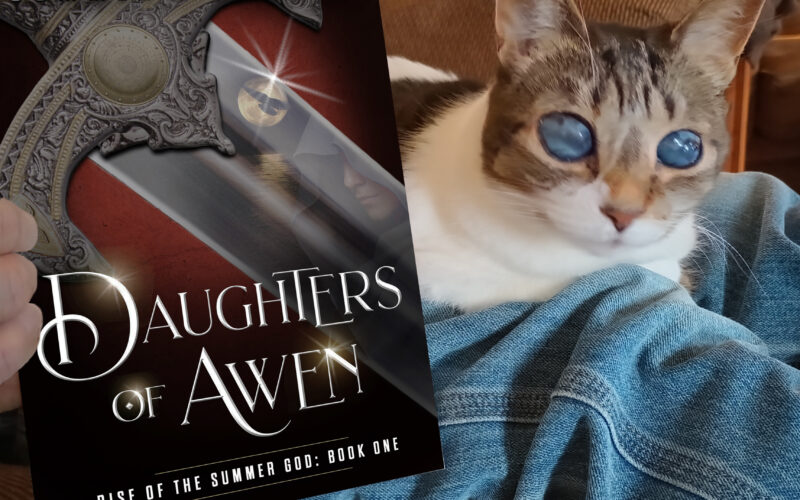Christopher Vogler's The Writer's Journey
The Threshold Guardian, Herald, & Shapeshifter
Everyone who’s read a blog post on the Hero’s Journey can spot the Hero and Mentor archetypes, but what about a Threshold Guardian, Herald, or elusive Shapeshifter?
Are these actual story archetypes or just personifications of the early stages in the Hero’s Journey? Do they play a significant role in modern narratives? And just how sexist is Christopher Vogler, in his book The Writer’s Journey, going to get in his descriptions of the femme fatal/temptress Shapeshifter? Find out what we have to say about these three archetypes in this episode—and boy, does Renee have things to say.
As a bonus, we draw upon Diana Wynne Jones’s book, Howl’s Moving Castle, for examples.
Writing Advice with a Side Order of Sexism
Buckle Up cuz we’re going on quite the ride through Hero Journeyland: first we pass through the Threshold Guardian Gates, take a u-turn through Herald Hamlet, and marvel at the menstruating/pregnant/menopausal Shapeshifter Statue in the center of Vogler-Says-The-Quiet-Part-Out-Loud Town Square. It’s a ride as wild as Mr. Toad’s and fun for the whole family!
Our Novel Approach to The Writer's Journey
We’ve chosen four novels to analyze while we read Vogler’s book, which will serve as examples to help you on your own journey to writing a novel based on the Hero’s Journey. Here’s what Kim & Renee are reading:
Archetypes in Howl's Moving Castle
If you’ve been listening to the podcast (or reading the show notes), you know just how outdated and irrelevant Vogler’s examples are as they pertain to the Hero’s Journey. Now that we’ve moved on to the Archetypes, Vogler hardly bothers with examples anymore–even bad ones (relevant or not). But don’t worry. In the spirit of supporting writers everywhere invested in improving their craft, we discuss Howl’s Moving Castle by Diana Wynne Jones as it pertains to the Archetypes in The Writer’s Journey. Spoilers Ahead!
Sophie has the great misfortune of being the eldest of three daughters, destined to fail miserably should she ever leave home to seek her fate. But when she unwittingly attracts the ire of the Witch of the Waste, Sophie finds herself under a horrid spell that transforms her into an old lady. Her only chance at breaking it lies in the ever-moving castle in the hills: the Wizard Howl’s castle.
To untangle the enchantment, Sophie must handle the heartless Howl, strike a bargain with a fire demon, and meet the Witch of the Waste head-on. Along the way, she discovers that there’s far more to Howl—and herself—than first meets the eye.
The Archetypes (so far) in Howl's Moving Castle
It’s clear at the outset that Sophie, the protagonist in Howl’s Moving Castle, is not following a Hero’s Journey. More fairy tale than quest, this book revolves around the relationships between characters as opposed to plot points (which seem to meander from one event to the next). Not that there’s anything wrong with that. Only, the random structure and narrative choices did trigger a few trust issues in Renee. . .
The Hero

We claim that a Hero is a protagonist on a Hero’s Journey. While Sophie travels on her not Hero’s Journey (a quasi Journey. The Diet Coke of a Journey. Just one calorie, not quite Hero’s Journey enough), she still has an objective: to lift a curse set on her by The Witch of the Waste. You can hear all about the Hero Archetype in this episode.
The Mentor

The Mentor is Howl (the Wizard Howl, the one with the moving castle). Once Sophie is an old woman and enters Howl’s Castle, he introduces her to the world of magic (his world) and its laws. Although he doesn’t teach her magic, she does learn by example. You can hear all about the Mentor Archetype in this episode.
The Threshold Guardian (The Gate Keepers)
As the name implies, Threshold Guardians guard the gates of. . .well. . .thresholds. Dramatically, Guardians are supposed to serve a more practical function: they present challenges to the Hero, either through a battle or test of wit, and force the Hero to prove their worthiness to continue on the quest. When paired with Crossing the First Threshold (like the Trolls in The Hobbit), they represent the first conflict which makes you, the reader, part of the (male-centric) story.

Although the purpose this archetype seems simple enough, Vogler can’t-stop-won’t-stop with the metaphysical when it comes to the psychological function (so far he’s done this with all the other Archetype thus far). He claims the Guardian “stands for our internal demons, the neuroses, emotional scars, vices, dependencies, and self-limitations that hold back our growth and progress,” whatever that’s supposed to mean. Talk about woo-woo land. Not that there’s anything wrong with crystals and fairy circles and such, but when it comes to writing advice, we’d like it presented sans unsolicited self-help, thank you very much.

As per Sophie’s quest, Kim insists the Threshold Guardian is The Witch of the Waste. The Witch does show up early in the story and turns Sophie into an old woman, which immerses Sophie into the sorcerers’ world of curses, magic, and moving castles. But given the Witch is the Big Bad, Renee isn’t totally convinced.
The Herald (The Messenger)

Right. Ok. As if the story wasn’t already going from The Call to Adventure, or The Mentor, or The First Threshold, or the Threshold Guardian, now The Herald. . .Vogler, please, for the love of all that is holy. . .WHICH IS IT?!
Whatever. Fine. Moving along. . .so how does a Herald function in a story? When we discussed the Heroine’s Journey with Elana Gomel during her interview, she mentioned that a Heroine’s Journey is internal, rather than external, which would require the “call for change” be from within rather than outside. In other words, this Archetype provides or triggers the internal (psychological & dramatic) motivation for the Hero. Be it a coincidentally relevant news story your protagonist just happens to be watching, to a ring placed in the hand of a tiny Hobbit, to a fire demon offering you hope that you can reverse the witch’s curse, The Herald manifests itself in different forms and delivery methods but always provides motivation to “get the story going.”

Calcifer, a fire demon, is The Herald, locking Sophie into the quest by making the following deal: if she figures out a way to break the contract he has with Howl, then Calcifer will help lift Sophie’s curse. It’s at this point Sophie is now part of the story, the world, and the characters shaping it. This quid pro quo deal becomes the internal motivation that guides Sophie throughout the story.
The Shapeshifter (or, Curse of the PMS Vampire)

And then we come to the Shapeshifter, which makes us wonder: is this stereotype, I mean, archetype really what Vogler thinks it is? First, what is the shapeshifter? It’s a character whose function and appearance changes quite drastically. You might be saying, like a Werewolf? Sure, why not? Or Keyser Soze from The Usual Suspects. Or Agatha Harkness from Wanda Vision.
Or Renee’s cats who turn into blood thirsty vultures at feeding time. These examples are clear enough (at least we think they are), but Vogler is anything but clear. TBH, we’re not exactly sure what he’s going for in the explanation of the psychological function of the Shapeshifter. Here’s a prelude:
“Women complain that men are vague, vacillating, and unable to commit. Men complain that women are moody, flighty, fickle and unpredictable.”
Ok, I guess this logic makes sense If you’re living in Stereotype Land. Last time we checked, if you look up “fickle” in the dictionary, you’ll see a picture of a certain co-host’s husband who shall remain nameless accompanied by a rant about how an open faced sandwich isn’t really a sandwich. How’s that for fickle?
Really though, it’s not even those two sentences that bother us. We notice Vogler mentions both sexes here in an attempt to troll them equally. But keep reading, Dear Reader, and you’ll come across this nugget:
“Women change dramatically during their monthly cycle, shifting with the phases of the moon. During pregnancy they drastically shift shape and mood.”
Did he just say the quiet part out loud? I mean, do women turn into werewolves and howl at the moon on their period or something? Do they become succubi when pregnant? This logic, he admits, comes from Carl Jung’s gender mumbo jumbo theory, which isn’t that far off to Freud’s theory that a woman is just an incomplete man.
Annoying sexism aside, how is this supposed to help us write a shapeshifting character? How is he telling us to write women characters? Why is this in a WRITING ADVICE BOOK?! It’s not enough to say: ‘oh, well, he says men are shapeshifters too.’ But Vogler doesn’t explain men the way he does women. Instead, he says “anger can turn gentle men into “beasts,” but that’s a universal emotion, not a predisposition somehow linked to biology. Kind of makes you wonder why so many films don’t pass the Bechdel Test.
Let’s just say, you gotta watch out for those PMS Vampires (and without their Midol). They’ll get ya every time.

According to our resident expert on all things Howl’s Moving Castle (Kim. It’s Kim), only two characters are who they seem to be: Michael and Mrs. Fairfax. In other words, just about everyone is a Shapeshifter in Diana Wynne Jones’ novel.
















AI & Authorship: Where’s the Line?
Authors & AI SeriesEpisode 6: AI & Authorship: Where’s the Line? We’ve explored AI as brainstorming allies, critique partners, and research assistants. Now we’re tackling the most contentious question:...